Jane Eyre

Brief Synopsis
Cast & Crew
Robert Stevenson
Orson Welles
Joan Fontaine
Margaret O'brien
Peggy Ann Garner
John Sutton
Film Details
Technical Specs

Synopsis
In 1829, nine-year-old orphan Jane Eyre lives at the English estate of her cruel aunt, Mrs. Reed, who favors her spoiled son John over the spirited Jane. Determined to be rid of Jane, Mrs. Reed sends her to Lowood Institution, an austere boarding school for orphaned and impoverished children, which is run by Henry Brocklehurst. Brocklehurst, a sadistic prig, warns the teachers and students to shun Jane, but kindhearted pupil Helen shares a meager portion of bread with her. Despite her disappointment over Lowood's austerity, Jane enjoys learning and her friendship with Helen deepens. Jane also appreciates the attention of Dr. Rivers, who tends to the pupils of Lowood and advises Brocklehurst to treat them more humanely. One day, Brocklehurst cuts off Helen's curly hair, then orders her and Jane to march in the rain as punishment for their "vanity" and "rebelliousness." The harsh experience proves fatal for Helen, and Jane loses her gentle friend. After Helen's death, Dr. Rivers encourages Jane to bury her grief and continue her education, which she does during the next ten years. In 1839, Brocklehurst offers Jane a teaching job, but she is determined to escape Lowood. After placing an ad seeking a position as a governess, Jane travels to a country estate known as Thornfield, where she is met by Mrs. Fairfax, the housekeeper. Mrs. Fairfax explains that Jane's pupil is a French girl named Adele, who is the ward of Thornfield's absent master, Edward Rochester. One evening, while Jane is taking a walk, a rider on horseback rises out of the mist and almost tramples her. The imperious rider twists his ankle when he falls, then rudely departs without divulging his name. Upon her return to Thornfield, Jane learns that the rider was Rochester, who mystifies her with his contradictory nature. Mrs. Fairfax advises Jane to make allowances for Rochester, who often stays away from Thornfield because of the unpleasant memories it holds. When Rochester seeks out Jane the next day, he is pleased by her honest admission that she does not find him handsome, and the rapport between them builds. That night, Jane is awakened by eerie laughter and when she rushes into the hallway, sees smoke coming from Rochester's bedroom. Jane awakens Rochester before he is consumed by the fire, and he allows her to assume that the blaze was set by Grace Poole, a supposedly unstable seamstress living in a little-used wing of the mansion. Although the incident draws the couple closer, the next morning, Jane is distressed to learn that Rochester has left for a house party at the home of Blanche Ingraham. The winter passes without word from Rochester, until one day, the household learns that he is to arrive with Blanche and other guests. Much to Jane's dismay, Mrs. Fairfax insinuates that Blanche will soon become Rochester's wife. Jane grows more troubled upon meeting the beautiful, haughty Blanche, but both she and Rochester feel their bond grow stronger when they talk. Their conversation is interrupted by the arrival of Mr. Mason, of Spanish Town, Jamaica, and Jane does not see Rochester again until late that night when she is awakened by screams. Rochester escorts Jane to the wing habited by Grace and there she tends to Mason, who has been wounded. Rochester sends Mason away with a doctor, then walks with Jane, who thinks that Grace instigated the attack. Rochester states that he is to be married, and later, tells Jane that he will find a new position for her, as she believes that his bride will send Adele away to school. Soon after, Rochester accuses Blanche of caring more for his money than for him, and she leaves with her family and the other guests. Rochester then tests Jane by informing her that he has found another position for her, and when she finally confesses her love for him, he passionately proposes. Adele is thrilled that Jane is to be her new mother, but Mason stops the wedding ceremony by announcing that Rochester is already married to Mason's sister Bertha. Rochester then leads the wedding party to Thornfield and shows them Bertha, who is violently insane. Soon after, Jane tells Rochester for the last time that she loves him and leaves the mansion, despite his pleas for her to stay. With nowhere else to go, Jane returns to Mrs. Reed, who has fallen ill, and nurses her until her death. Jane learns from Dr. Rivers that Rochester has been inquiring after her, but she asks him not to reply. One night, however, Jane believes that she hears Rochester calling her name in great torment, and she rushes back to Thornfield. There she is told by Mrs. Fairfax that Bertha set the mansion on fire and Rochester was seriously injured in an unsuccessful attempt to rescue her. Just then, Rochester enters the ruins of the mansion, and Jane realizes that he is blind. She is overjoyed to be reunited with him, and her passion convinces him that she feels more for him than mere pity.

Director

Robert Stevenson
Cast
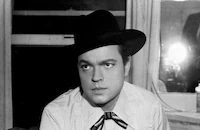
Orson Welles

Joan Fontaine

Margaret O'brien
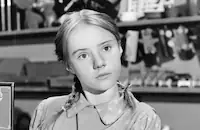
Peggy Ann Garner
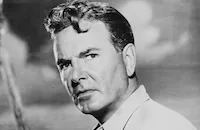
John Sutton
Sara Allgood
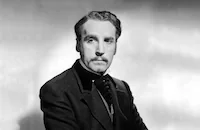
Henry Daniell

Agnes Moorehead
Aubrey Mather
Edith Barrett
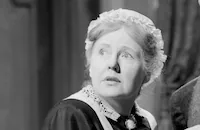
Barbara Everest

Hillary Brooke
Ethel Griffies

Eily Malyon

Ivan Simpson
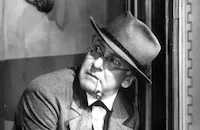
Erskine Sanford

John Abbott

Elizabeth Taylor

Mae Marsh
Mary Forbes
Thomas Louden
Yorke Sherwood
Ronald Harris

Charles Irwin
Gwendolen Logan
Moyna Macgill
Gerald Oliver Smith
Jean Fenwick
Bud Lawler
John Meredith
Leslie Vincent
Roseanne Murray
Marion Rosamond
Dan Wallace
Billie Seward
Ruthe Brady

Adele Jergens
Colin Campbell
Eustace Wyatt
David Clyde
Harry Allen
Charles Coleman

Billy Bevan
Tempe Pigott
Alec Craig
Frederick Worlock
George Kirby
Arthur Gould-porter
Alan Edmiston
Barry Macollum

Brandon Hurst
Nancy June Robinson
Crew
George Barnes
James Basevi
Ross Dowd
W. D. Flick
Ketti Frings
William Goetz
Roger Heman
Bernard Herrmann
John Houseman
Renè Hubert
Aldous Huxley
Wiard B. Ihnen
Arthur Jacobson
Barbara Keon
Thomas Little
Kenneth Macgowan
Guy Pearce
William Pereira
William Pereira
Maurice Seiderman
Fred Sersen
Robert Stevenson
Walter Thompson
Orson Welles

Videos
Movie Clip




Trailer
Hosted Intro
Film Details
Technical Specs

Articles
Jane Eyre on Blu-ray
Jane Eyre has been the source of many film and TV adaptations over the years -- most recently, a 2011 version starring Mia Wasikowska -- but it's this 1944 edition that has best stood the test of time and is acknowledged as staying especially true to feel of Bronte's novel. (Note: Jane Eyre was released in England in late December 1943, but it was a 1944 U.S. release and bears a 1944 copyright in its on-screen credits, so it's officially considered a 1944 picture.) In the story, young Jane is raised in a foreboding school for impoverished girls after her parents die and her abusive aunt, Sarah Reed, kicks her out. After suffering for years at the hands of the malicious Mr. Brocklehurst, Jane finally departs the school a grown woman and takes a job at another sinister place: Thornfield Hall, where she works as governess to the young adopted daughter of Edward Rochester (Orson Welles), a mysterious, brooding, harsh and unpredictable figure who comes and goes erratically. Thornfield is a place of strange goings-on, with odd noises and an attic that is off limits and seems to be imprisoning someone. Jane and Rochester begin a relationship that moves into friendship and more, yet seems defined by undercurrents of repressed passions and deep secrets.
It's a real testament to the screenplay by Robert Stevenson, John Houseman and Aldous Huxley that their 96-minute film is able to fully keep the qualities that make Bronte's novel such a classic, even if the film does wrap things up a bit too quickly. Stevenson also directed the film, which has such a beautifully atmospheric look -- with deep-focus compositions, expressionistic black-and-white photography, and extravagantly gothic sets -- that it has often been attributed more to Orson Welles, who some assume exerted his own artistic influence onto a weak-willed Stevenson. But according to scholars who have actually studied the two men and this film, nothing could be further than the truth.
Several of the extra materials on this Blu-ray delve into this "controversy," including Julie Kirgo's superb liner notes, which inform viewers that the chain of influence among artists was much more complex than meets the eye. Welles had done his own radio adaptation of Jane Eyre in 1940, and several of his Mercury Theatre collaborators were involved in the 1944 film -- Agnes Moorhead, John Houseman and Bernard Herrmann among them -- but Stevenson and his cinematographer, the great George Barnes, were talented artists in their own right. Welles' cameraman on Citizen Kane (1941), Gregg Toland, had previously assisted Barnes and thought of him as a mentor. As Kirgo writes: "the question is begged: who was influencing whom? And does Eyre look Wellesian or, perhaps more accurately, does Kane look Barnesian?"
It's also said, understandably, that Jane Eyre is very reminiscent in look and narrative of the film Rebecca, which also starred Fontaine, but in fact, Rebecca author Daphne Du Maurier had been inspired in writing her 1938 novel by Bronte's Jane Eyre, published 91 years earlier. Nonetheless, producer David O. Selznick, who developed the Jane Eyre movie, sold it as a package -- talent included -- to Fox, because he ultimately decided it was too similar to Rebecca, which he had also produced.
Jane Eyre features a dazzling roster of supporting players, starting with a trifecta of remarkable child performances. Peggy Ann Garner is brilliant as a young Jane, in a performance that feels of a piece with Fontaine's turn as the grown Jane, and Margaret O'Brien and an uncredited Elizabeth Taylor are every bit Garner's equal. Taylor is all of 11 here, and already luminously beautiful in a touching performance. She would shoot to stardom one year later in National Velvet (1944), and O'Brien and Garner would be honored with special Academy Awards in 1944 and 1945, respectively. Also in the cast: Agnes Moorhead as Jane's cruel aunt Sarah Reed, Henry Daniell as the autocratic Mr. Brocklehurst, Sara Allgood as the loving maid Bessie, Hillary Brooke as the socialite and romantic rival Blanche, and John Sutton as the kindly Dr. Rivers.
The DVD and Blu-ray market for classic films has altered dramatically in recent years, with the major studios shifting more to made-on-demand DVD-Rs. The distributor Twilight Time, however, has developed a business model of releasing limited-edition Blu-rays of select Fox (and other) classic titles, and has become a gold standard for movie fans, up there with distributors like Criterion, Kino and Cohen. Twilight Time's Jane Eyre is a good case in point. The film was originally released onto standard DVD by Fox Home Entertainment in 2007, and Twilight Time has retained all the original, generous extras for this high-definition version, which looks and sounds excellent, and is limited to just 3000 copies.
Among the extras: an isolated score track so that one of Bernard Herrmann's finest scores can be appreciated in its glory; fine liner notes by Julie Kirgo; the original theatrical trailer; the 19-minute featurette "Locked in the Tower: The Men Behind Jane Eyre," about Stevenson's and Welles's involvement with the film; the 45-minute propaganda film Know Your Ally Britain (1944) which was also directed by Robert Stevenson and stands as a fascinating, very well executed documentary narrated by Walter Huston and produced by Frank Capra, designed to educate Americans about the history and culture of their wartime British ally; two insightful commentary tracks, one with film historian Joseph McBride and actress Margaret O'Brien, and the other with film historian Julie Kirgo, Herrmann biographer Steven C. Smith, and historian Nick Redman -- who, with Brian Jamieson, formed the Twilight Time distribution label.
By Jeremy Arnold

Jane Eyre on Blu-ray
Jane Eyre (1944) - Joan Fontaine in the 1944 Film Version of JANE EYRE
Synopsis: Cruelly treated by her guardian, Mrs. Reed (Agnes Moorehead), the orphan Jane Eyre (Peggy Ann Garner) is sent to the oppressive Lowood School to be further abused by the near-maniacal Henry Brocklehurst (Henry Daniell), whose pious cruelties hurry the death of Jane's beloved best friend Helen Burns (Elizabeth Taylor). Refusing a teaching position when she comes of age, Jane (Joan Fontaine) takes a job as a governess at the mysterious house of Edward Rochester (Orson Welles), a man brooding over dark secrets. Odd happenings in the house culminate in Jane saving Rochester from a mysterious fire set in his room. They grow to like each other's company but Rochester openly woos Blanche Ingram (Hillary Brooke), a beautiful but unpleasant neighbor. Rochester eventually declares his love for Jane and they plan to marry. All goes well until the ceremony is interrupted by Mr. Mason (John Abbott), who states that he has reasons why Edward Rochester cannot marry -- anybody.
A satisfying and superior entertainment overall, Jane Eyre has some odd aspects. The opening section with the sensitive child actress Peggy Ann Garner (A Tree Grows in Brooklyn) is almost perfect, condensing the events of the book without detracting from them in any way. Agnes Moorehead's imperious guardian and Henry Daniell's schoolmaster are a terrible pair of tormentors, and young Jane must endure humiliation and injustice. The stylization of these scenes evokes Jane's ordeal with masterful ease, with Jane and her friend Helen (the unbilled Liz Taylor) forced to march in the rain or stand on a stool amid a maze of German-inflected shadows. Perhaps the only sign of haste is in the quick pass-by of Sara Allgood's Bessie, who clearly played a much bigger part in the book. There is also some clever fudging with the "Dr. Rivers" character enacted by John Sutton. Writers John Houseman, Aldous Huxley and Robert Stevenson substituted his character for some relatives Jane encounters late in the tale.
When Jane 'grows up' to become Joan Fontaine, the movie and book begin to diverge. Fontaine is directed to play Jane too much like the ultra-shy and passive Rebecca from Fontaine's earlier career-making Alfred Hitchcock hit. Brontë's Jane is much more forceful and independent. After her stifling childhood the Jane of the book is determined to retain her personal independence, even though she welcomes marriage with Rochester. She is wary of being "bought," while the movie's Jane is all smiles when being fitted for a trousseau. Joan Fontaine's acting is always good, yet her character in this movie suffers from being altogether too similar to her roles in Rebecca and the later Suspicion.
That brings us to Orson Welles, in his first starring role (sort of) directed by someone else. As always, Welles makes a firm impression, but there's something funny about it -- he never lets us forget that, even though A Big Actor is on screen Doing Dramatic Things, that we shouldn't be fooled, it's really him. Welles can be great in character roles where his bombast and eccentric behavior brighten otherwise dull plot corners. In Jane Eyre, the unnecessarily meek Fontaine follows Welles around as if she were walking a big dog that she can't control.
Welles aficionados stress his creative influence over the film. Having Agnes Moorehead and Erskine Sanford in the cast, along with Bernard Herrmann's score certainly provides links to Welles' classic: one music cue comes direct from Citizen Kane). Equally strong is the film's period sensibility, carefully manufactured on interior studio sets, a feeling perhaps influenced by Val Lewton's RKO films. Just the year before, Lewton's I Walked with a Zombie had been immediately recognized as a version of Jane Eyre transposed to the West Indies. Director Stevenson may have been as impressed with Lewton's 'small strokes' approach to period detail as were the British filmmakers Michael Powell and David Lean, who in the next few years would turn out a number of highly accomplished literary and period classics using the diminished resources of tiny English studios. The Mrs. Fairfax character is played by Edith Barrett, Lewton's actor from both Zombie and The Ghost Ship. Henry Daniell wouldn't be associated with Val Lewton for another year, in his The Body Snatcher.
Jane Eyre wraps itself up in a big hurry, which is a good decision. From the unsuccessful wedding forward, the story becomes progressively sketchy, barely touching on Jane's adventures away from Rochester's house. The original book managed to find an unexpected inheritance for Jane -- another Romance Novel "must" -- and a potential husband candidate, albeit a missionary with no romantic appeal. The movie hurries to the memorable moment when a supernatural voice calls to Jane over the moors. Since Orson Welles is one of the best disembodied voices of the 20th century, that moment works beautifully. The high drama of Herrmann's dynamic music does the rest of the heavy lifting.
Hillary Brooke (the possessed mother in Invaders from Mars) is Jane's rival, and Adele Jergens (Day the World Ended, Try and Get Me!) has a bit as a 19th-century party girl.
Fox's Cinema Classics Collection disc of Jane Eyre begins with a disclaimer about imperfect transfer elements, but less-than-optimum visuals are noticeable only once or twice. Whatever the problem was, it doesn't interfere with our appreciation of the show on any level. The disc is loaded with extras. Joseph McBride carries most of one commentary aided by Margaret O'Brien, who plays Rochester's little ballerina of a daughter. O'Brien's most memorable comment is that she got to wear fancy costumes, while Peggy Ann Garner acted in rags. A second commentary combines the observations of Nick Redman, Steven Smith and Julie Kirgo and is a bit livelier.
Bernard Herrmann fans will be interested in the film's isolated "M&E" (music and sound effects) track, which makes this disc a dynamite soundtrack experience as well. The parts I listened to sounded like raw music cues, including audio slates. Jane Eyre is one of Herrmann's most accomplished traditional scores.
A fairly lengthy John Cork featurette, Locked in the Tower, examines the film's contested paternity. It has a problem in that two of the interviewees are relatives of credited director Stevenson, and the discussion is heavily weighted in his favor. Welles is characterized as an insecure prima donna followed by an entourage, supposedly to intimidate others into thinking he was in charge. The docu says that Stevenson was not overpowered by his famous collaborator, a fair enough statement. The interviewees try to equate the cinematic accomplishments of the two directors, which is silly.
One terrific and unexpected extra is Stevenson's WW2 propaganda film Know Your Ally Britain, a hearty morale-booster (narrated by notables like Walter Huston and Orson Welles) that might seem more appropriate to a war-themed feature. A restoration comparison, trailer and galleries of stills and promotion artwork follow.
In the box cover image Joan Fontaine looks as though she can't wait to get away from Orson Welles. A gigantic castle on the package back looks more like Sleeping Beauty's crib than any place where Plain Jane might hang her hat.
To order Jane Eyre, click here. Explore more Bronte Sisters adaptations here.
by Glenn Erickson
Jane Eyre (1944) - Joan Fontaine in the 1944 Film Version of JANE EYRE
Jane Eyre (1944) - Jane Eyre
Welles wasn't supposed to be the star of Jane Eyre: That honor would have gone to Joan Fontaine, who had the title role, if Welles hadn't insisted on top billing as a condition of accepting the role. But while Fontaine makes a perfectly suitable Jane Eyre, there is something a little recessive about her: She's meek at times, as the role demands, but when it's time for her to be fiery, there's a wall of reserve that she can't quite break through. Meanwhile, Welles, as the taciturn, mysterious Rochester, holds nothing back: He's a charismatic bear of a man tucked carefully into a restrictive corset, the better to ensure that with his rather robust proportions, he would still register as leading-man material. The performance is fascinating in its pig-headedness: Elsewhere in the movie, a very young (and uncredited) Elizabeth Taylor plays one of Jane's fellow orphans, and her charms are subtle but radiant. Luckily, Welles had no scenes with this marvelous little icon-in-training: He surely would have attempted to outdazzle her.
None of this is to say that Welles, as Rochester, isn't fascinating to watch; and Fontaine holds her own quite well -- she's a steady, slow-burning presence. But even if Welles wasn't the director of Jane Eyre in name, it seems he did everything in his power to take control of it. David O. Selznick approached Welles about appearing in the film as he and Stevenson were developing it. And according to Barbara Leaming's biography Orson Welles, Welles was eager to accept the part. His plan was to use the money he earned to self-finance the completion of It's All True (a project that would, of course, remain unfinished). The studio behind Jane Eyre, 20th Century-Fox, agreed to pay Welles the considerably large salary of $100,000. (He had been paid exactly that to produce, direct, write and act in Citizen Kane, 1941.) Welles also asked that he be given a Movieola so he could work on his own project during his off-hours. And in addition to demanding top billing, he insisted on being given an associate producer credit. Selznick agreed, but later persuaded 20th Century-Fox not to include that credit on-screen, fearing that it would overshadow Stevenson's very significant role in developing the picture.
Stevenson's Jane Eyre was the fifth screen adaptation of the material: There had been three previous silents, as well as a sound version in 1934, starring Virginia Bruce and Colin Clive. (It has also, of course, been adapted many times since, recently by Cary Fukunaga, starring Mia Wasikowska and Michael Fassbender.) Welles was a credible choice for this 1943 version: He had played Rochester on radio before, in 1940. And as Leaming notes, at age twenty-seven and not yet gaining weight as rapidly as he would in later years, Welles could still make a good romantic lead, though the role demanded some serious dieting and the help of that aforementioned corset -- Welles had also worn one for Citizen Kane.
The resulting performance is assuredly magnetic. Welles isn't exactly a conventional version of the character: He doesn't have Rochester's seriously brooding quality, but he's good at channeling the man's potentially cruel streak. A glorious, ominous Bernard Herrmann score underscores the story's Gothic nature. And then, of course, that very young, and already very beautiful, Elizabeth Taylor makes her evanescent appearance: At the time Jane Eyre was made, she'd recently been signed to a twelve-month contract at MGM; the studio immediately loaned her to 20th Century-Fox. Taylor's part was so small that years later, when she sat her own children down to watch the film on television, she realized she'd been cut clean out of the film as it had been edited for broadcast.
Still, it takes more than a few careless cuts to excise Elizabeth Taylor from anyone's memory. And the same goes for the pompous -- though admittedly exceptionally gifted -- Welles. In her autobiography, No Bed of Roses, Joan Fontaine tells a story about catching Welles just as he was about to make an entrance in a scene. Fontaine, following closely behind him, noticed a potential costume malfunction and whispered, "Stand up straight. Your coat gapes at the neck if you don't."
Welles roared, "Stop the camera!" He proceeded to make a fuss: "Miss Fontaine says my costume doesn't fit. Get the wardrobe man, get the tailor, get the producer!...I'm not shooting this scene until my jacket is fixed!" Fontaine relates that the wardrobe man and the tailor rushed away with the coat and let it sit in the wardrobe department for an hour, after which it was returned to Welles, unfixed. Naturally, he didn't even notice, and the director and crew could at last continue with the scene. Orson Welles may have tried to control Jane Eyre. But in the end, it took on a life of its own. What's more, one little girl in its cast -- a bright but unassuming presence -- would eventually achieve fame equal to his. And she didn't have to roar nearly as loud to get it.
Producer: William Goetz, Kenneth Macgowan
Director: Robert Stevenson
Screenplay: Aldous Huxley, Robert Stevenson, John Houseman; novel by Charlotte Brontë
Cinematography: George Barnes
Music: Bernard Herrmann
Film Editing: Walter Thompson
Cast: Orson Welles (Edward Rochester), Joan Fontaine (Jane Eyre), Margaret O'Brien (Adele Varens), Peggy Ann Garner (Jane, as a child), Agnes Moorehead (Mrs. Reed), Elizabeth Taylor (Helen).
BW-97m.
by Stephanie Zackarek
SOURCES:
AFI Catalog
Jerry Vermilye and Mark Ricci, The Films of Elizabeth Taylor, Citadel, 1989
Barbara Leaming, Orson Welles: A Biography, Limelight Editions, 2004
Joan Fontaine, No Bed of Roses: An Autobiography, William Morrow and Company, 1978
Alexander Walker, Elizabeth: The Life of Elizabeth Taylor, Grove Press 1991
IMDB
Jane Eyre (1944) - Jane Eyre
Quotes
Trivia
Notes
The opening title card of the film reads: "Twentieth Century-Fox presents Jane Eyre by Charlotte Brontë." Throughout the film, offscreen narration is spoken by Joan Fontaine as "Jane Eyre," and at the end of the picture, she paraphrases the book when describing the partial recovery of "Rochester's" sight: "And then one day, when our firstborn was put into his arms, he could see that the boy had inherited his own eyes, as they once were-large, brilliant and black." The character "Dr. Rivers," played by John Sutton, was created for the film and does not appear in Brontë's book. On October 6, 1941, New York Times announced that independent producer David O. Selznick had joined United Artists and intended to produce Jane Eyre for release through UA. Other contemporary sources note that Selznick began preparations on Jane Eyre in early 1941, and that director Robert Stevenson, who was a member of the Brontë Society, had been interested in making a film adaptation of Charlotte Brontë's novel for several years. A February 1942 Hollywood Reporter news item noted that Selznick was testing Sir Cedric Hardwicke for the role of "Brocklehurst," and that K. T. Stevens, Burgess Meredith and Gene Kelly would also test for the film. In April 1942, Hollywood Reporter announced that Ronald Colman was "out" of the production, and that Selznick would test Alan Marshal to replace him. In July 1942, Hollywood Reporter first speculated that Walter Pidgeon, Colman and Marshal were all "strong contenders" for the role of "Edward Rochester," then announced that Selznick had offered the role to Orson Welles, who had played the part previously in radio performances. An unsourced but contemporary article in the film's file at the AMPAS Library reported that Fontaine, Vivien Leigh and Katharine Hepburn were "neck-to-neck contenders" for the part of "Jane Eyre."
In October 1942, however, Selznick began efforts to sell a number of his literary properties, and it appeared that Paramount would purchase the rights to Jane Eyre. The deal was not struck, however, and in November 1942, Selznick sold the completed script of Jane Eyre to Twentieth Century-Fox, along with the rights to Claudia and Keys of the Kingdom. Information in the Twentieth Century-Fox Records of the Legal Department, located at the UCLA Arts-Special Collections Library, discloses that Keith Winter and DeWitt Bodeen May have contributed to the completed script, and a contemporary guide for teachers quoted director Robert Stevenson as crediting Bodeen with doing "a good deal of our research work." In addition to the screenplay, Selznick sold the completed production designs executed by William Pereira and arranged for Twentieth Century-Fox to employ Pereira, Fontaine, Stevenson and cinematographer George Barnes on the picture. For more information about the sale of Selznick's properties to Twentieth Century-Fox, please see the entry above for Claudia.
According to a memo from Selznick reprinted in a modern source, Selznick suggested the casting of Vivien Leigh's daughter, Suzanne Holman, as young Jane. A January 1943 Hollywood Reporter news item announced that although Peggy Ann Garner had been scheduled to play Jane Eyre as a child, the part was re-assigned to Margaret O'Brien, who was borrowed from M-G-M, because the studio "changed the casting for a different type." In the finished film, however, Garner does play Jane, and O'Brien portrays "Adele." In February 1943, Hollywood Reporter noted that Vincent Price was being tested for the role of Brocklehurst. Although a February 1943 studio press release announced that Glen Gallagher had been cast in the picture, his appearance in the completed film has not been confirmed. According to a modern source, Igor Stravinsky was engaged to write the film's music score but did not finish due to disagreements with studio production chief Darryl F. Zanuck. Stravinsky's compositions did not appear in the completed picture, and modern sources report that composer Bernard Herrmann was hired upon the request of Selznick and Welles.
In discussing the studio's production plans, a December 20, 1942 New York Times article noted that writer Aldous Huxley had intentionally decided to depict "Bertha Rochester" as an off-screen character who was discussed rather than seen so that "the inherent menace in the character will be more effective." The article also noted that "English censorship restrictions on the depiction of lunacy will also be satisfied by the off-screen device."
Although no producer is listed in the onscreen credits or the SAB, Hollywood Reporter production charts list Kenneth Macgowan as the producer and Welles as the associate producer. A January 22, 1943 Hollywood Reporter production chart erroneously listed William Perlberg as the film's producer, even though several earlier news items had credited Macgowan. An April 8, 1943 Hollywood Reporter news item noted that Goetz had announced that Welles would receive an onscreen credit as associate producer. In a April 17, 1943 memo to Goetz, reprinted in a modern source, Selznick protested Welles's proposed associate producer credit, claiming that it would detract from the achievement of Stevenson, who Selznick believed had largely acted as producer since the sale of the Jane Eyre screenplay. The Hollywood Reporter review commented, "As several producers had a hand in bringing Jane Eyre to its glorious fulfillment, screen credit to any one individual was waived by all."
Soon after the completion of Jane Eyre, Welles served as a consultant on the studio's two-reel short subject entitled Three Sisters of the Moors. The short, starring Sir Cedric Hardwicke, Mollie Lamont, Lynne Roberts and Heather Angel, told the story of the Brontë sisters and was intended to interest moviegoers in Jane Eyre. According to Hollywood Reporter, in February 1944, Monogram announced that it would withdraw from circulation all prints of its own feature-length Jane Eyre, which was originally released in 1934. The Hollywood Reporter news item noted that "despite requests to reissue the picture in various territories, Monogram feels it would be unethical to do so at this time while Twentieth Century-Fox is releasing its new version." A Lux Radio Theatre broadcast of the Twentieth Century-Fox production, starring Welles and Loretta Young, aired on June 5, 1944. Other Lux Radio Theatre broadcasts aired on June 27, 1938 in a version starring Helen Hayes and Robert Montgomery, and on June 14, 1948 with Montgomery reprising his role as Rochester.
In addition to numerous stage presentations, Brontë's novel has been adapted for the screen several times, one of the earliest of which was produced by Thanhouser Film Corp in 1910 in a one-reel version starring Marie Eline and Gloria Gallop (see AFI Catalog. Film Beginnings, 1893-1910; A.07844). Lisbeth Blackstone and Dallas Tyler starred in the 1914 Whitman Features Co. version, and in 1918, Edward Jose directed Alice Brady and Elliott Dexter in Woman and Wife for Select Pictures (see AFI Catalog of Feature Films, 1911-20; F1.2264 and F1.5064). In 1921, Hugo Ballin Productions released their version of Jane Eyre, which was directed by Ballin and starred Norman Trevor and Mabel Ballin (see AFI Catalog of Feature Films, 1921-30; F2.2782). The 1934 Monogram production was directed by Christy Cabanne and starred Virginia Bruce and Colin Clive (see AFI Catalog of Feature Films, 1931-40; F3.2203). Ethel Griffies played "Grace Poole" in both the Monogram and Twentieth Century-Fox productions. Other versions of the story include a 1970 British production starring Susannah York and George C. Scott, and directed by Delbert Mann; a 1996 European production directed by Franco Zeffirelli and starring William Hurt and Charlotte Gainsbourg; and a 1997 British television co-producion, starring Samantha Morton and Ciaran Hinds.
















